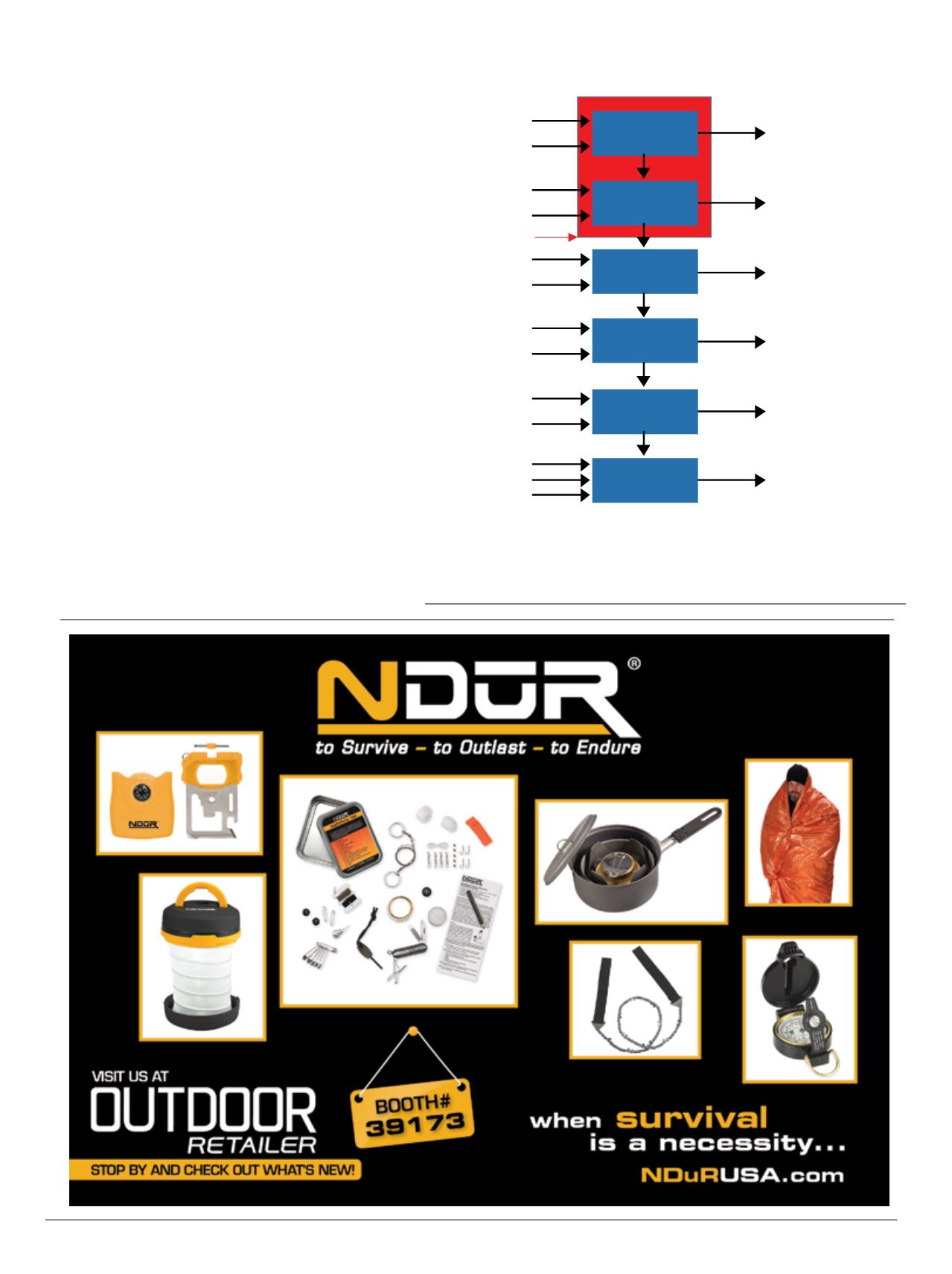

Fortunately, new technologies continue to
arrive, presenting compelling cases to ditch the
entrenched paradigms of today’s dye industry.
To fully appreciate how much better these new
technologies are, an understanding of what con-
stitutes the hot mess of today’s current technol-
ogy requires a short primer.
Getting color into our mountain parkas, school
daypacks and Burning Man tents is achieved
through several commonly used processes. Be-
cause of the variables encountered with different
finishes and fibers, the actual dyeing treatment
can start at various points up to the finished
product. For example, filaments can be spun into
yarn, then the yarn dyed by the package, a kind
of king-sized spool. Globally, the most common
method has undyed yarn woven or knitted into
fabric, then dyed (piece dyeing). Figure 1 shows
a generic flowchart of the processes involved in
the manufacturing of textiles.
Water figures prominently throughout the
entire process, yet within that process, the dye
step consumes a large share of it. Although
cotton by far uses the most water in becom-
ing a finished product, the focus here is on the
outdoor industry’s reliance on polyester, not to
mention the vastly larger world market.
Figure 1. A generic look of the dye process involving knitted or woven textiles. Nearly every step of
the way involves the use of water (Water and Chemical use in the Textile Dyeing and Finishing Industry,
The Environmental Technology Best Practice Programme). The red box represents the pre-treatment
of the yarns or fabrics before dyeing.
Figure 2. The critical point were carbon dioxide (CO2) becomes supercritical
is at 88F/31C and 1,071 pounds per square inch/7.39 MPa (Image: Creative
Commons CCO 1.0 Ben Finney, Mark Jacobs, 2010)
50%
60%
48.1%
42.9%
Inputs
Hot water
Detergent
Alkali
Water
Pre-Dye Treatment
Bleaching agent
Water
Dyes
Water
Inks
Water wash
Heat
Resin
Retardants
Process
Desize
Scour
Bleach
Dye
Finish
Waste
Hot water
Dilute detergent
Dissolved size
Dilute spent chemical
Hot water
Trace contaminants
Bleach
Water
Unfixed dye
Water
Unfixed inks
Water
Unfixed chemicals
Waste heat
Liquid
Gas
Solid
Supercritical
Fluid
Critical point
1
10
200
250
300 350 400
100
1,000
10,000
pressure
P (bar)
temperature
T (K)Triple point
Inside
Outdoor
|
SUMMER
2017
34
















